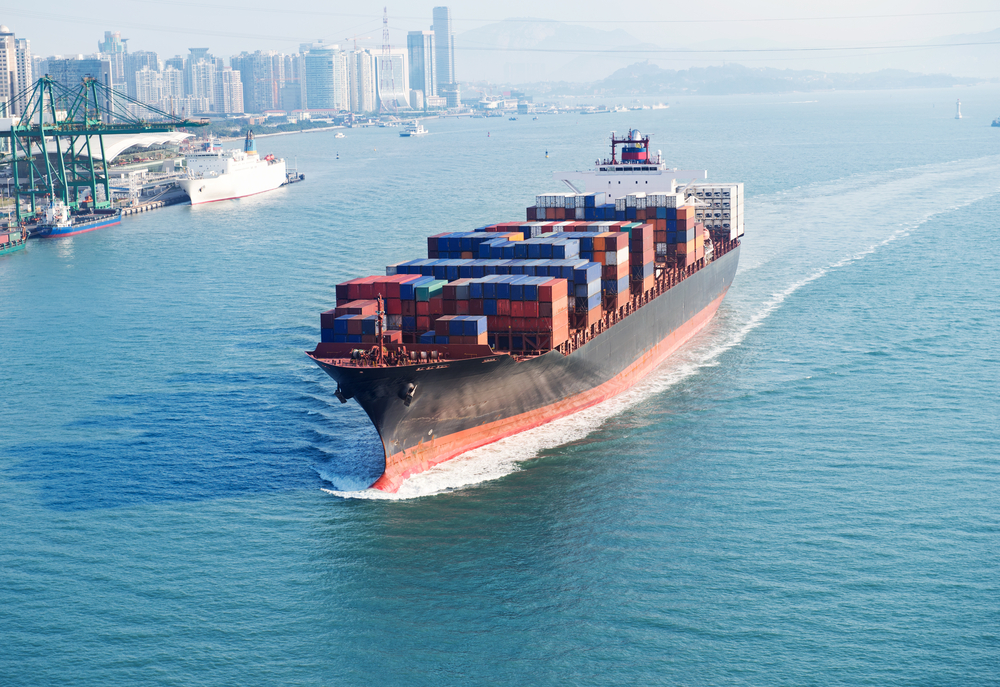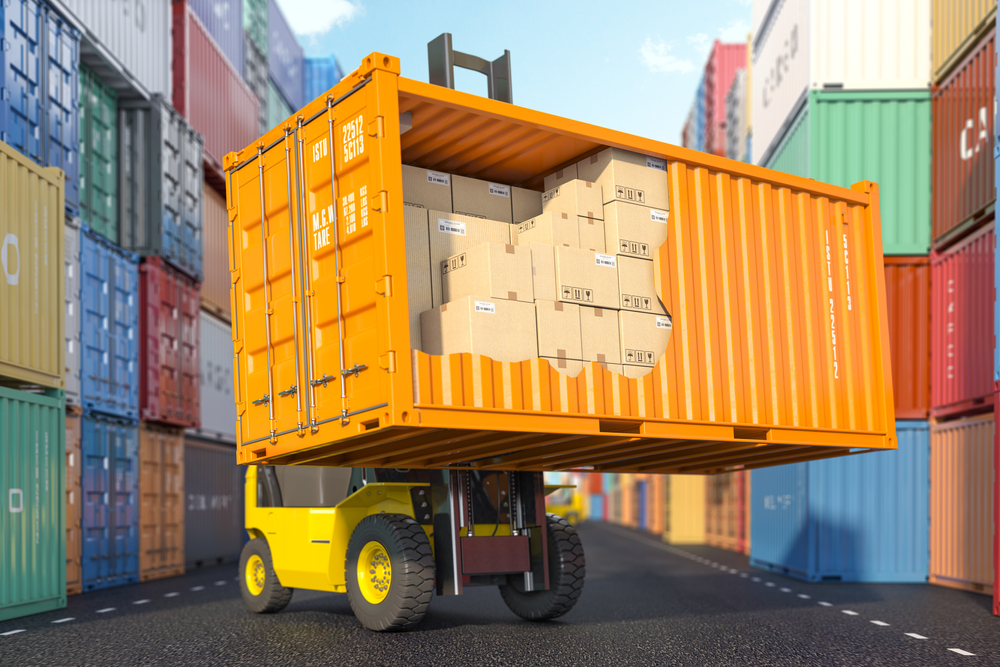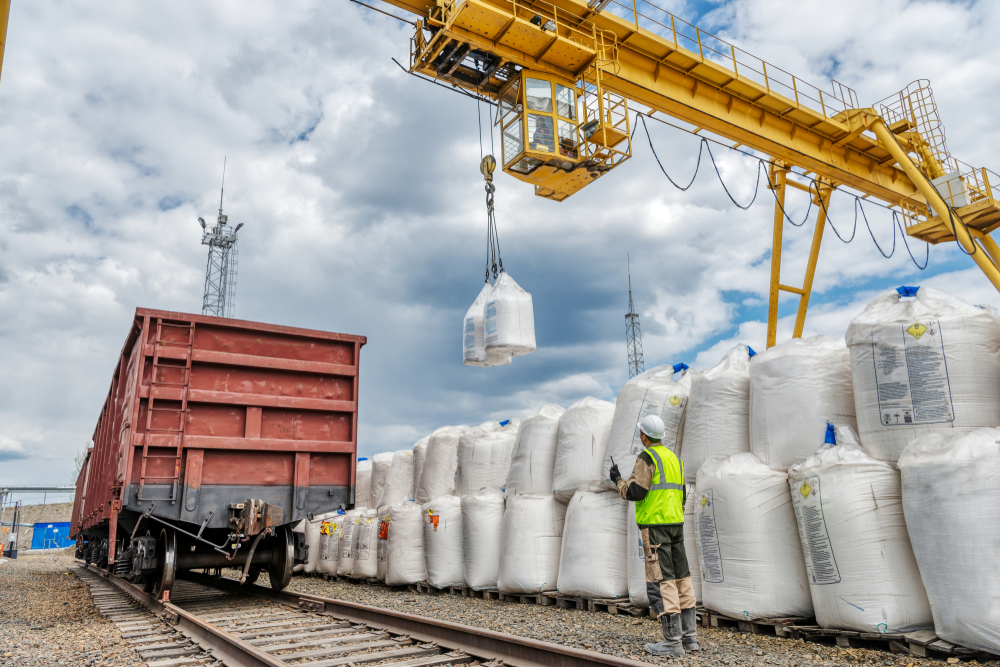What Is Intermodal Shipping and What Are the Benefits?

Intermodal shipping is the practice of using two or more transportation methods to move goods en route to their destination. This may include transporting items by air, sea, rail or truck. Many companies will ship out their goods using more than one form of transportation to save money and reduce travel times, especially when shipping goods to another country. Intermodal shipping is rising in popularity as supply chain disruptions persist.
If you are looking for a better way to transport your goods that are stored in bulk bags or other containers, intermodal shipping can help you reach your business goals. Learn about the benefits of using two or more modes of transportation to move goods through the supply chain.
Intermodal Shipping: What Is It?
Intermodal shipping means using different modes of transportation to move goods from point A to point B. Companies typically have several transportation options when shipping their products, with trucks, trains, air travel and ocean freight being the most common. The process may involve one or more logistics companies. Goods are typically transported and handled in bulk. Cranes and lifts will move the container from one vehicle to the next so it can complete the next leg of the journey. Intermodal shipping is also usually the only way to ship products overseas.

Types of Transportation
Air travel severely reduces the weight capacity of your containers. It is the fastest and most expensive option, but your goods can fly halfway across the world in a matter of hours or days.
Ocean freight is the most popular option when shipping items overseas. It is also the most cost-effective. You can move large quantities of goods, including heavy goods like machine parts and even automobiles. However, it may take anywhere from six to eight weeks for your goods to arrive in the destination country.
Once the goods arrive at the nearest port, they are then placed on a truck or train before heading inland to the destination. The goods are then handed off to a delivery driver, who will drop off the package at the specified address.
Rail has benefited the most from the recent rise in intermodal shipping. In 2020, intermodal accounted for approximately 25 percent of revenue for major U.S. railroads, more than any other single commodity group. Trains move faster than trucks. Companies also don’t have to worry about dealing with traffic jams, road closures and other unforeseen delays.
Companies that use intermodal shipping need to package their goods inside containers that can be loaded onto different types of vehicles. Carriers typically use cranes or lift trucks to move the containers from one mode of transportation to another. Others may use automation to speed up the fulfillment process.
The goods must be stored inside a pallet container on a pallet for efficient handling. These containers can hold large quantities of goods. The carrier may place goods from different clients inside the same container to save space. A distribution center will then depalletize the item before sending the finished product to the end user.
Intermodal shipping is often used to transport raw materials and supplies. For example, super sacks can store up to 2,200 pounds of raw dry goods. They can be placed onto a pallet or carried from above using the attached straps. This gives the logistics company more options in terms of transporting the goods.

The Benefits of Intermodal Shipping
- Save Money
Shipping costs largely depend on the mode of transportation as well as local supply and demand for logistics services. Some areas have an abundance of shipping options, while others are notoriously difficult to travel through. Comparing rates from different carriers can help companies save money on shipping services. They can use different types of logistics companies to get around surge pricing when navigating areas with limited transportation options.
- Reduce Travel Times
Using more than one transportation method can speed up the delivery process. Companies can use intermodal transit to access new routes and avoid bottlenecks that can increase travel times by days, if not weeks, depending on congestion.
Studies show that intermodal transportation can even speed up travel times across short distances. A study from the European Commission found that 30 percent of road freight transported over 300 km (186 miles) could be shifted to other modes like rail or waterborne transport by 2030, and more than 50 percent by 2050, thanks to the rise of green transportation corridors, like electric vehicles.
- Increased Flexibility
Above all else, intermodal shipping gives companies more options when shipping their products. The supply chain is anything but predictable, and the increased flexibility can help companies get around problems when they emerge. Trade disputes, environmental disasters and port congestion can all happen at a moment’s notice. Retailers will often plan multiple routes in advance using more than one mode of transportation to make sure their goods can travel to their destination without delay.
Intermodal shipping will likely become more common in the years to come. New transportation methods and automated technology will further change the way companies transport their goods. It’s all about finding the fastest option at the lowest price.






